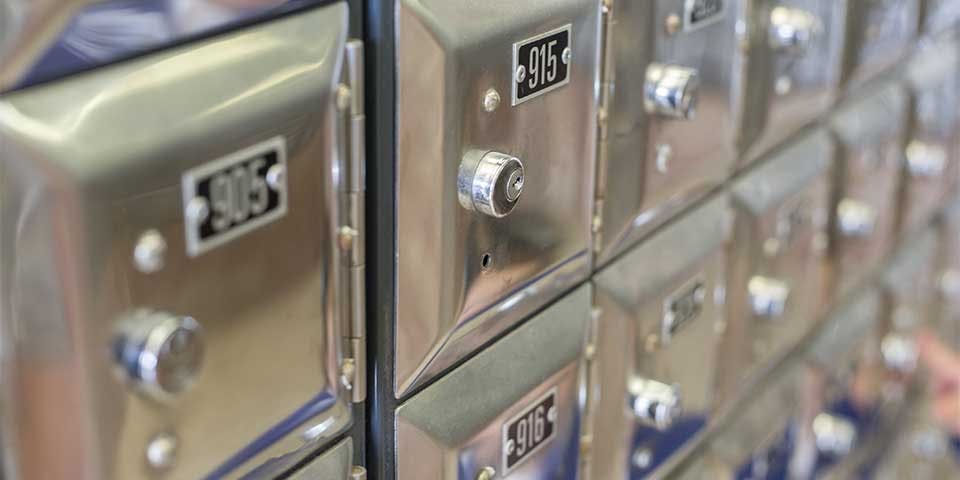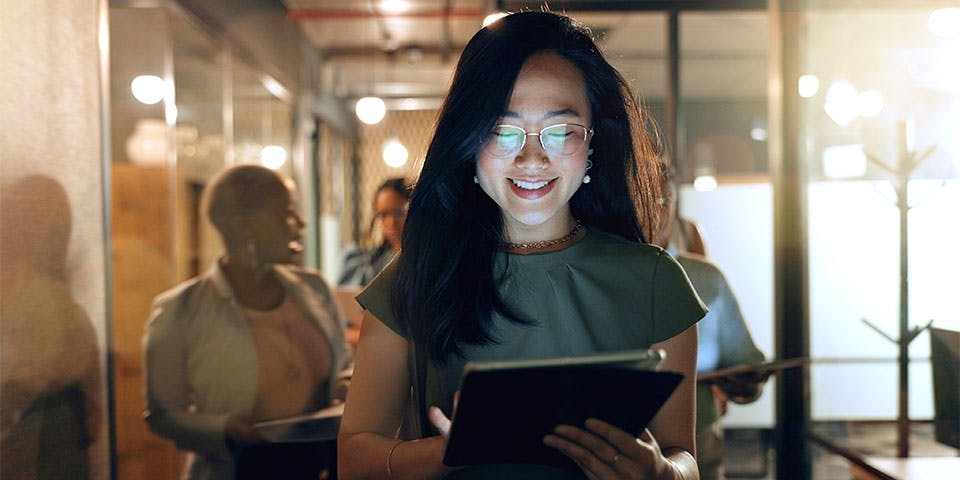15 March, 2021
What Does the Office of the Future Look Like?
For decades now, commuting to a standard-issue office block has broadly been accepted as the norm among a majority of 9-to-5ers. However, COVID-19 (and more directly, the UK-wide ‘working from home’ experiment many of us have been taking part in throughout the pandemic) seems to have prompted something of a rethink.

Indeed, more people than ever before find themselves questioning whether or not we actually need to work from an office at all. Even if the general consensus ends up being that a private central work hub can still be a good thing, what have we learned about how to build them better? In short, what might our offices of the future look like as we move past 2020-21?
Pros and cons of traditional office space
There are clearly various pros and cons to working in a traditional office environment. Some of them are fairly general, and others - such as concerns around data security, or having full access to integrated workplace technologies - are more dependent on the exact nature of the work in question.
Across numerous office-based sectors, the ongoing COVID-19 pandemic has seen a widespread push towards socially-distanced home working. As a result, many of us have found ourselves reconsidering our longstanding relationships with traditional office spaces.
For a majority of respondents, the most commonly cited pros and cons of working from a central office hub tend to include:
Pros of working in an office
- There may be fewer non-work-related distractions than at home
- More opportunity/incentive to get up and move around regularly
- Potentially easier to feel you’re working collaboratively
- Strictly defined start and finish times, with little intrusion into home life
- On-hand IT support for those that need it
Cons of working in an office
- Additional expenses (commuting, lunches and snacks, office attire etc)
- Reduced sense of independence and empowerment
- Decreased flexibility in terms of working hours and time/task management
- Regular interruptions from colleagues, phones etc can limit per-hour productivity
- More time wasted on travel, breaks, assisting colleagues, running errands etc
- Less opportunity to develop independent problem-solving, comms and IT skills
- Absenteeism more likely when having to commute; can take longer to catch up
All of the above pros and cons are very valid, although they do all tend to assume that working from home is the sole alternative to office-based work. Clearly this isn’t necessarily the case, as virtual office, coworking and hotdesking solutions will often provide a ‘best of both’ experience. Either way, there’s little doubt that the traditional old models of office workspaces (whether we’re talking cubicle-based or more ‘open plan’ environments) are starting to look very dated.
If office real estate is to remain a worthwhile investment in today’s tech-forward business world, it’s clear that something fundamental needs to change given the increased flexibility and convenience of remote working.
What will the offices of the future look like?
In 2021 and beyond, technology - and communication technology in particular - will continue to play an ever more central role in modern office life. This is true whether we’re working from a central corporate building, whether businesses use virtual offices allowing the option to work from home or from a rented coworking space such as a hotdesking hub.
Obviously, one of the shortest potential answers to the question ‘what will future offices look like?’ could simply be ‘our houses’. That’s certainly where a lot of us are currently based during work hours - and some of us will likely be rearranging our businesses around making it more of a permanent fixture going forward.
For those that do, virtual office services and virtual business addresses can prove hugely beneficial in helping provide impressive contact addresses for clients, ease any mail handling concerns, tackle WFH privacy issues, and provide remote secretarial assistance. Even where we don’t plan on working from home forever, the rapid recent growth of various networking apps and platforms (Zoom, Microsoft Teams, Google Meet etc) means many of us can be far more flexible about where we work than ever before.
Most analysts believe these sorts of services will continue to exert a huge influence on the development and use of office spaces over the coming decades. To what extent, exactly, will depend on how quickly developers, business owners and landlords can adapt their workplaces designs and ideas.
A home from home?
One major area of focus, given our increased ability to work from home, should see future office design and function aiming to target the key ‘pros’ of remote clock-ins. First and foremost, this will mean drastically improving the provision of lifestyle-based facilities in our future office buildings.
On-site gyms, dedicated relaxation areas, childcare facilities and healthcare amenities are all expected to become more common sights in workplaces of the future. Meanwhile, the actual working areas themselves are likely to become simpler, more stripped-down and more highly functional, since the majority of us will be carrying around everything we need to do our office jobs in our bags and pockets.
Greener workspaces for better sustainability
Greater focus on environmental issues among consumers and workforces is leading many companies and industries to adopt a similar approach. Again, this is likely to impact heavily on the way office spaces are created and used in future. Several leading firms are already looking into the potential for wider adoption of various carbon-neutral designs, including prefabricated ‘pop-ups’ and even 3D printed buildings.
A general drive towards reducing waste for better efficiency and eco credentials will also help steer the future of office planning. Again, this should quickly lead to simpler and more highly functional spaces that actively seek to embrace nature, greenery, and fully sustainable energy/waste management systems in their core design.
A more welcoming and supportive environment
In order for the office of the future to draw in workers who could just as easily do their jobs from home, they’ll need to become places of increased comfort and reduced formality. There are many small and inexpensive ways to achieve this, but it requires more than just a few bean bags being designated a ‘breakout area’.
The key focus will almost certainly be on the single greatest asset of coworking areas: the ability to meet and collaborate with other people face-to-face. Forward-thinking developers are already beginning to create offices that actively position themselves as a collaborative problem-solving environment, built on better support for connectivity, creativity, individuality and interaction.
With increasing numbers of us likely to be doing at least some portion of our weekly work from home, it’s highly possible that we’ll eventually come to think of offices more as ‘meeting spaces’ than all-day work spaces per se.
Future offices - a major cultural shift
In one sense, all of this should be fairly easily achievable: it’s ultimately about creating spaces where people choose to spend their time, rather than feeling obligated. That’s relatively easy to do, given that there are definitely some very real negatives to doing all your work from your own home.
In practice, however, it’s likely to require a wholesale rethink of office culture as we know it. Aside from sweeping changes to the core designs and functions of our traditional old office blocks, landlords and businesses will also need to reconsider their relationships with both the spaces and each other. If greater flexibility is likely to be at the heart of future office culture, the established owner-tenant dynamic won’t work for much longer in its current form.
Indeed, affordable on-demand office spaces are already very widely used, particularly by smaller companies that don’t want to commit to the expense and rigidity of a long-term lease. As a result, one common prediction outlines a future in which different businesses and departments will therefore be more inclined to share buildings or floors. This seems a likely outcome, chiming with future visions of the office as an interactive meeting and collaboration space.
Of course, as the tech platforms supporting a future ‘superconnected’ office culture continue to open up further exciting possibilities, there will also need to be a robust security infrastructure in place. Some of these technologies are inherently invasive, after all - there’s already a growing need to ensure both our individual privacies and corporate data remain sufficiently protected, and this will only become more pressing in future.
Read more about these issues in our article on cloud computing, coworking and data security, or check out the rest of our blog archive for lots more discussion of modern flexible coworking spaces.
Hand-picked related articles
Our meeting rooms are located at our Paul Street office,
and it’s just a few minutes walk from Old Street tube station…
Our Address
3rd Floor, 86-90 Paul Street,London,EC2A 4NEDirections
Opening hours
Monday - Friday 9am - 18.00pm






![Best Registered Office Address Provider in the UK [2022 Ranking]](https://images.prismic.io/hoxton-mix/MzRjMzJmMmUtYzJmNi00NDhlLTg2YzctZjc0M2ViNGMzOGU5_201b0b3d-8f63-4205-860f-8d0bf1fc4553_best-registered-office-address-provider-in-the-uk--2022-ranking-list.jpg?auto=compress%25format&rect=120%250%25720%25480&w=960&h=640)

